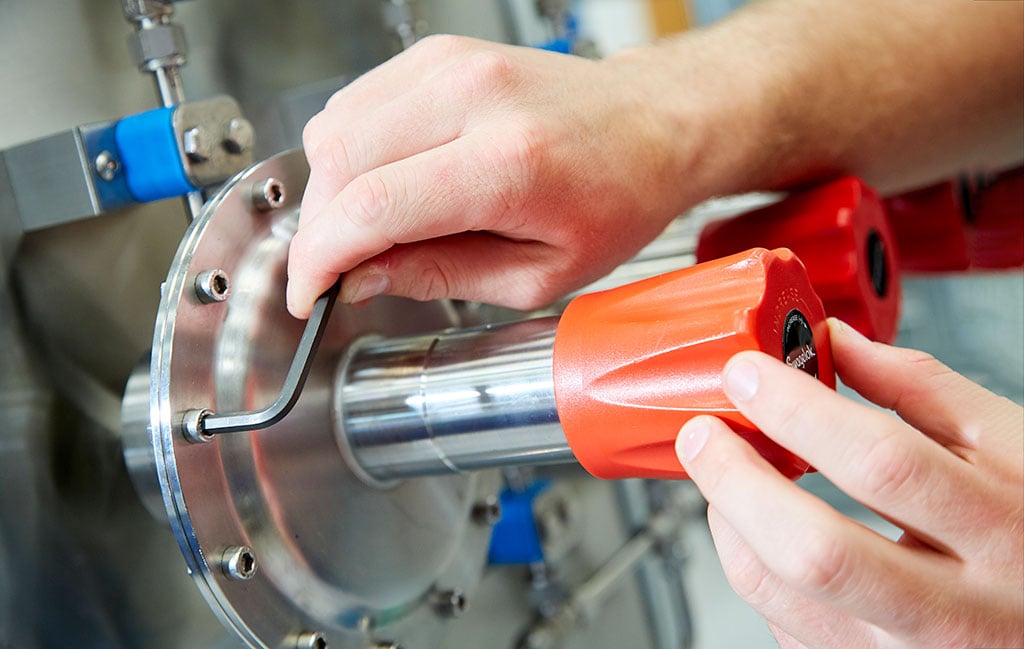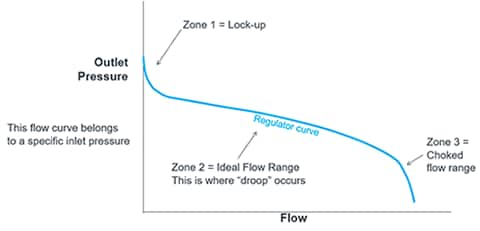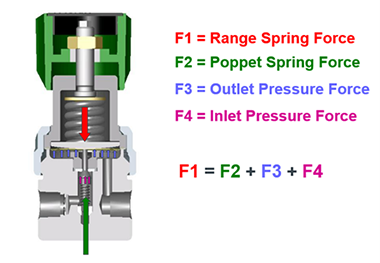Regulator Flow Curves Introduction

An Introduction to Understanding Regulator Flow Curves
Rich Wubs, Regional Field Engineer & Technical Solutions Design Lead
Getting Started with Pressure Regulators
Pressure regulators are a dynamically reactive part of fluid systems. They are mechanical devices consisting of a setting and feedback system that work together to automatically adjust the pressure as the system changes. While a regulator is a seemingly simple device, its operational characteristics are quite complex. This series of blog posts covers how to select a regulator and understand how it will behave.
Learn about swagelok® regulators
Key performance factors that you require to select and assess a regulator:
- Flow Rate (volumetric or mass)
- Inlet Pressure
- Outlet Pressure
- Fluid: State (liquid or gas) and Temperature
Once you have gathered this important information, you can then begin your journey to find the best fit for your application. The Swagelok Flow Curves Technical Bulletin is a great place to start.
Before we jump into the selection process, it is important to understand the shape of the flow curve and why it is a curve in the first place. The curve consists of three key areas: 1) Lockup (or seat load drop), 2) Sweet Spot, and 3) Choked flow. Additional key terms that we will discuss are Droop, Creep, and Cv.
Regulator Force Balance
A pressure regulator can be simply described as a mechanical device that controls fluid pressure via a force balance. This force balance happens between the loading mechanism (typically a spring and sometimes a gas) and the fluid pressure in the system. We call the part that detects or “feels” the fluid pressure the sensing element. This element can be a diaphragm in lower pressure systems and a piston in higher pressure systems. The image below depicts the forces in a regulator.
F1 and F3 are the most obvious and influential forces. F2 and F4 are smaller forces that we will look at later in this series. These are small but key forces in the more subtle operational aspects of the regulator.
So how does this force balance occur in the regulator? Ultimately, the spring force equals the sum of the opposing forces. For now, to build our knowledge, we will focus only on F1 and F3.
When a pressure reducing regulator senses a pressure below its setting, the spring force (F1) causes the regulator to open up and allow more flow through its seat with more pressure building on the outlet side, balancing the unit. This opening movement causes the spring to extend slightly, resulting in a slightly lower F1 force, and slightly lower pressure setting. This is an important characteristic of all regulators. They respond to changes in downstream pressure by adjusting the flow through the device. This should not be confused with a flow control valve. The regulator only controls pressure. The flow through a regulator varies because of the regulator responding to pressure variations. This effect is what we refer to as droop and can be seen as a downward slope in the flow curve – pressure decreases as flow increases.

NOTE: Backpressure regulators respond differently. We will look at backpressure regulator performance in later blog posts.
We use the droop curves to understand regulator performance. They guide us in the selection of regulators that will provide the appropriate flow capacity for a given set of inlet and outlet conditions.
In future posts, we will look at:
- Lockup vs ideal range vs choked flow
- Fluid density effects on flow scale
- Supply pressure effect
- Selection examples (selecting a regulator in 5 simple steps)
- Flattening the flow curve
- Backpressure regulators
subscribe to the swage talks blog

